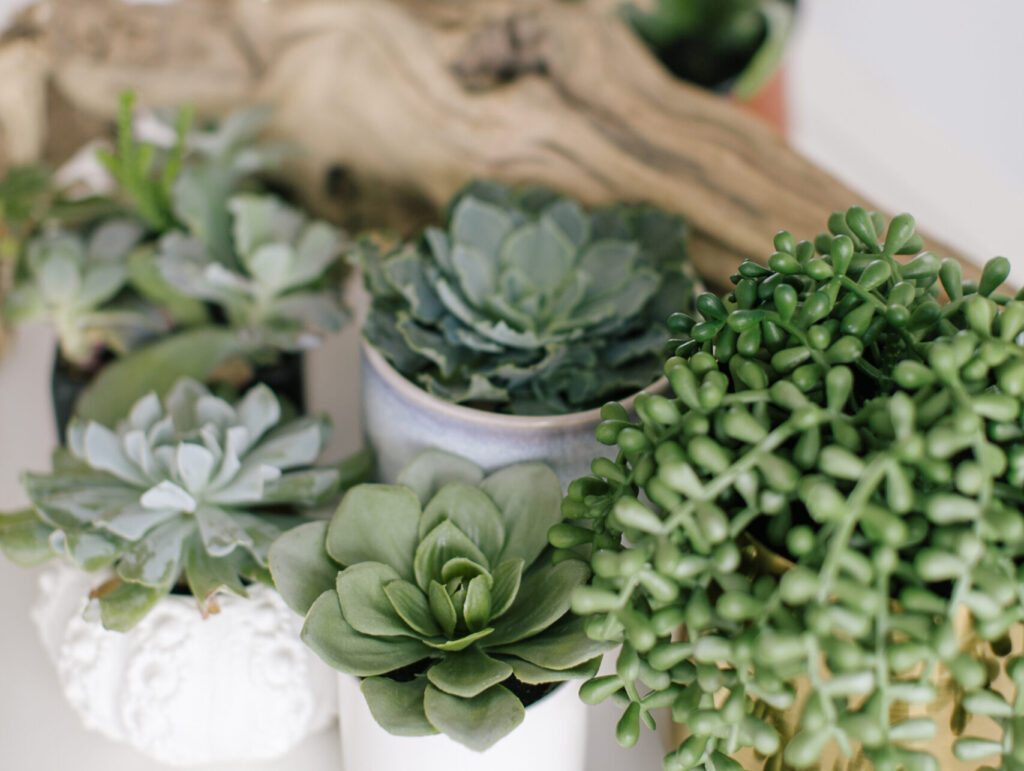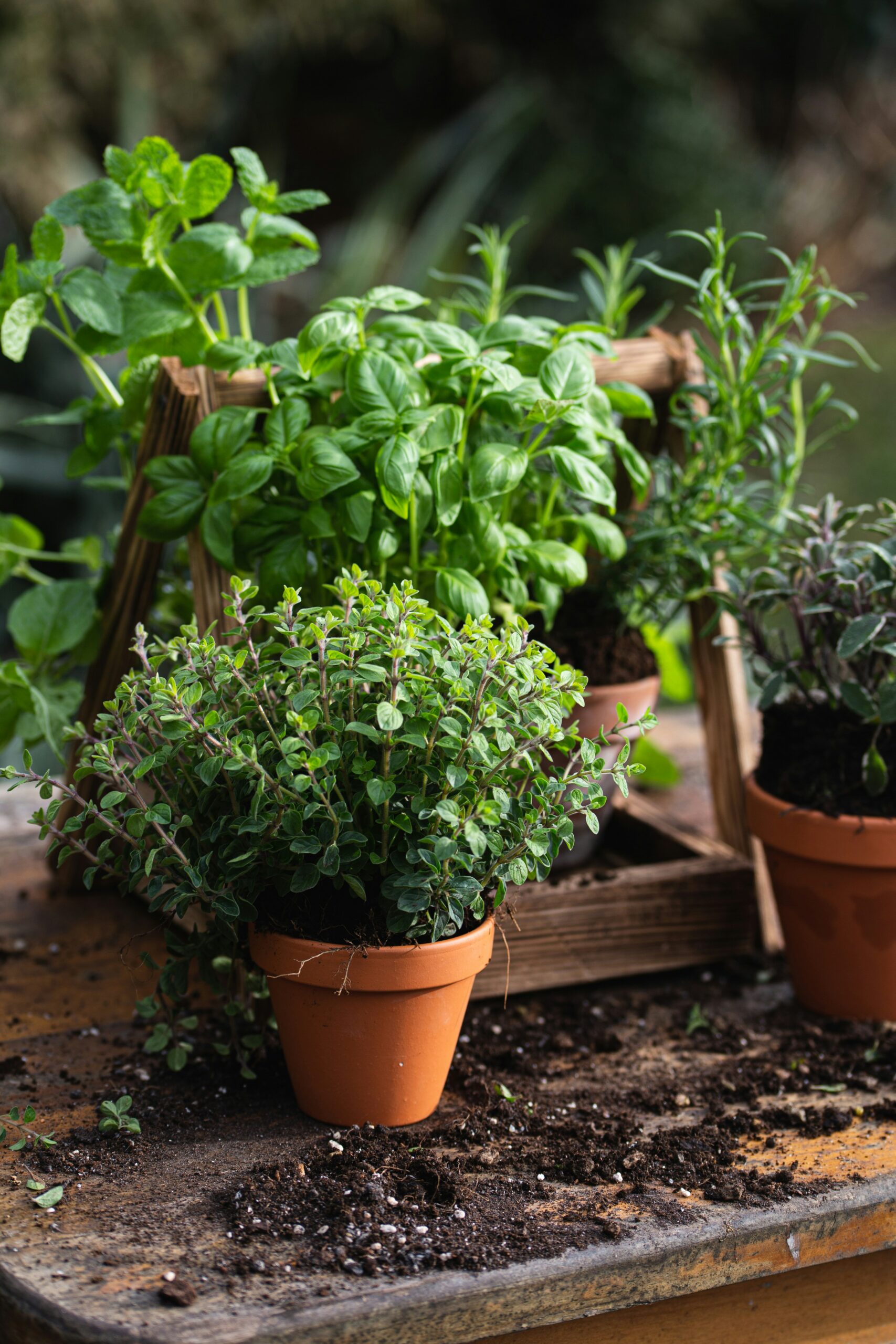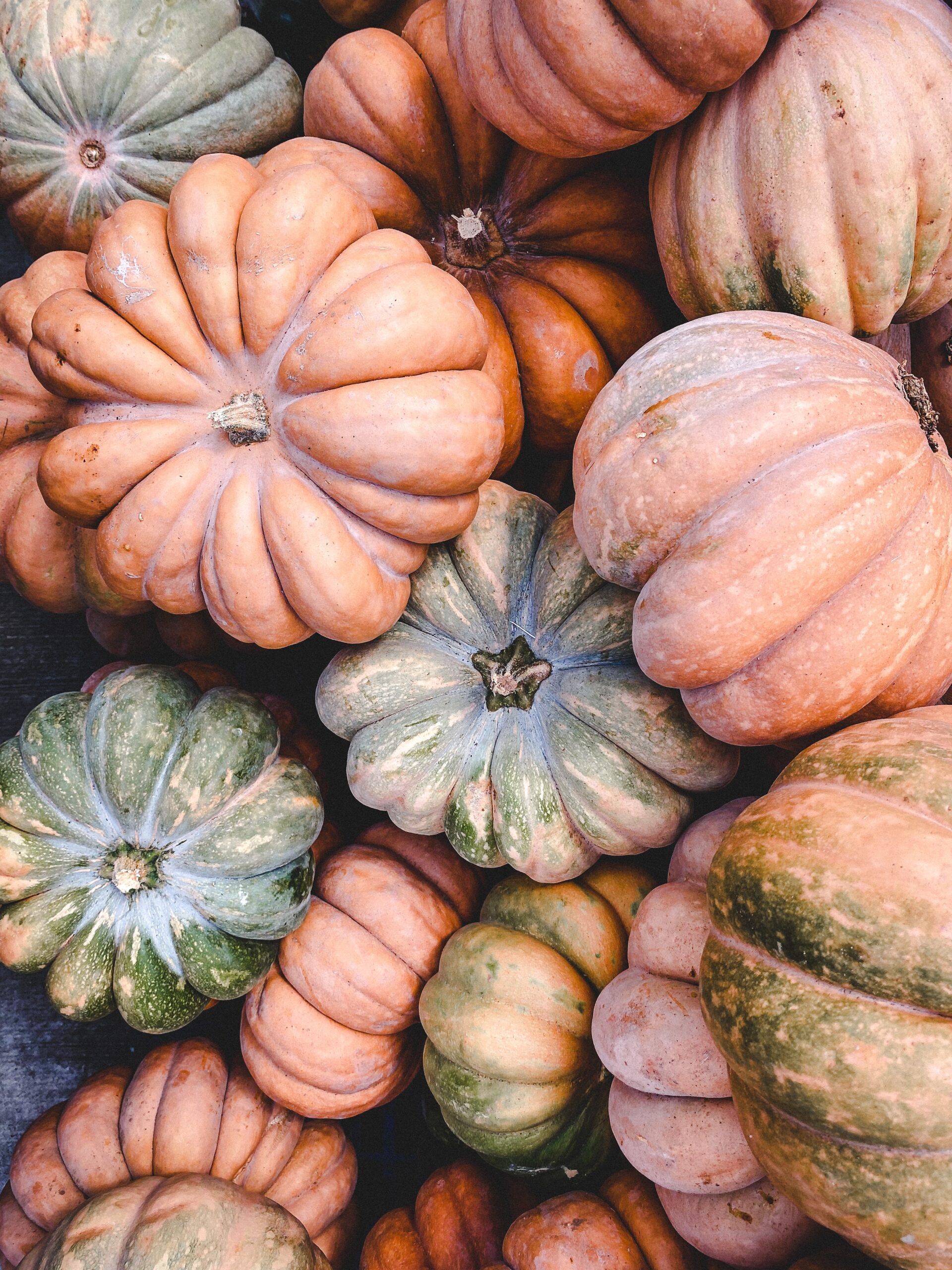What are Succulents?
Often times, the names we associate with groups of plants refer to their scientific categorizations (ex., genus, family, order) like roses (Genus Rosa) and magnolias (Genus Magnolia). In these cases we are talking about plants that are closely related. Sometimes, however, we talk about a group of plants with a shared characteristic, even if they aren’t closely related. And the latter is the case for succulents. This name doesn’t reference one particular group of plants, rather any plant that has adapted water storage in a part of its anatomy. Simply put, it’s the presence of thick, fleshy tissues in either the stems, leaves or roots of a plant; where the function is to preserve water.
Did you Know? At least 60 plant families contain at least one succulent. But, 40% of all succulents are found in two families, the fig-marigold family (Aizoaceae) and the Cactus family (Cactaceae) with about 2000 species in each. That’s a lot!
Succulents Vs. Cacti
This is generally a point of confusion. The easiest way to remember the relationship between the two is to note that all cacti are succulents but not all succulents are cacti. Cacti have fleshy stems for water retention and their “leaves” have additionally been modified into spines with a threefold purpose. The first to reduce water loss (as you would with regular foliage), second, as defence to defer herbivores and lastly, to increase airflow and create shade.
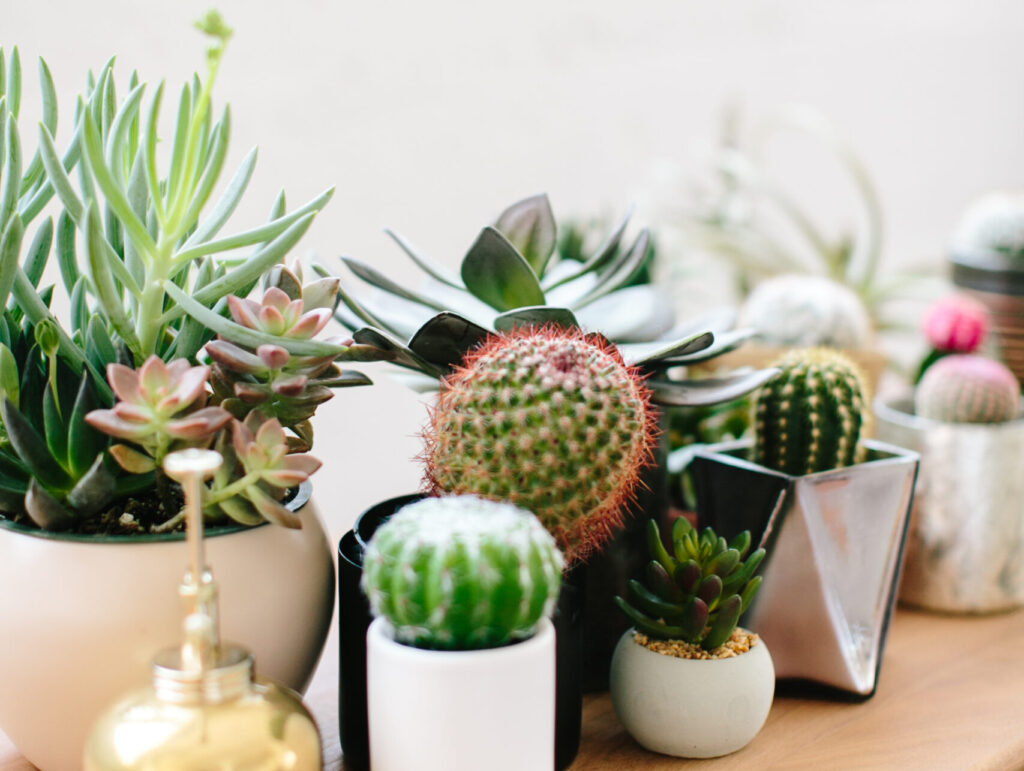 Basic Care Strategies
Basic Care Strategies
Here are a few misconceptions to clarify and best practices in terms of care:
LIGHT: Although many live in the hottest deserts in the world, most can’t tolerate direct, bright and hot light for very long (6+ hours). Plants (just like me and you) can develop sun burns, their leaves will discolour and even drop when they can’t handle the sun. While some can flourish in direct light, most thrive in bright, indirect light.
WATER: They have evolved over hundreds of thousands of years to be able to retain water for long periods of time. Therefore, the number one cause of death in succulents is from overwatering. While each species is slightly different (we’ll note watering requirements for our picks below), the general rule of thumb is “less is more”. Overwatering will cause damage on a cellular level, literal bursting of plants cells via water that then results in translucent and browning leaves that will rot off.
SOIL: While sand is conducive to healthy plants (like in the desert), we look to coarse, well-draining soil that is nutrient rich. Often pre-made mixes will provide adequate draining.
POTS: Again case by case, but majority of succulents will be successful in shallow pots as they have shallow roots. Unglazed clay is the best choice material wise, as its porous nature allows excess moisture to evaporate out.
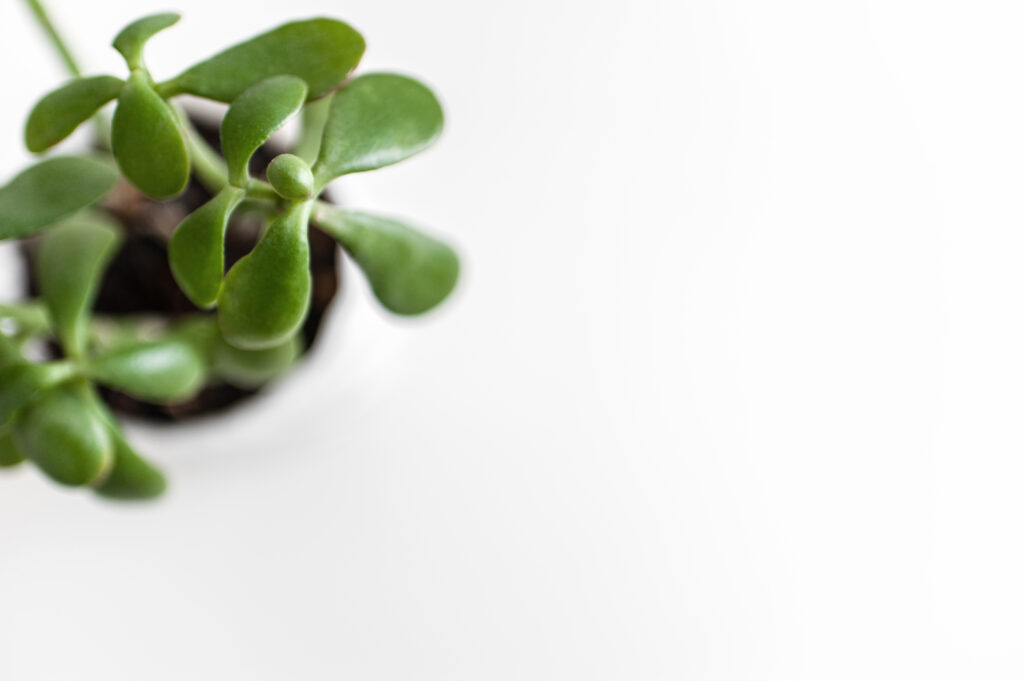
Our Top 5 Succulents
Jade (Crassula ovata)
Woody stems, oval fleshy leaves, and a longevity to awe at.
LIGHT: Can tolerate direct light, bright, indirect is better
WATER: When the top 2-3 inches is dry or when the leaves begin to wrinkle, provide a deep soak
Wax Plants (Genus Echeveria)
Fast growing, arranged in a stunning rosette shape and available in different hues and colour arrangements.
LIGHT: Requires the most amount of light on this list, at least 6+ hours of light daily to retain its compact rosette
WATER: 1-2 times a month, but this will depend on the size of your plant
Burro’s Tail (Sedum morganianum)
A trailing and hanging succulent that gets its name from the resemblance to a “burro” or small donkey.
LIGHT: Bright, indirect light up to 6 hours a day, but capable of partial shade. Look to the “tail”, a compact tail will tell you that you have the perfect light conditions but if it begins to spread and get lanky, your plant needs more light.
WATER: 1-2 times a month, check that the top 1-3 inches are dry before watering
Prickly Pear (Genus Opuntia)
Flat stemmed, spiny cacti that are included in the picturesque ideals of the desert. If cared for properly you can eventually harvest the edible “cactus pear”.
LIGHT: About 4-6 hours of direct sunlight daily
WATER: Twice a month in the summer, once a month throughout the rest of the year.
Zebra Cactus (Haworthiopsis attenuata)
Featuring sharp triangle like leaves, these succulents additionally produce a beautiful “zebra stripe” on a deep green flesh.
LIGHT: Partial sun, these plants will turn a deep red if exposed to too much sun indicating stress, and eventually turn white and die
WATER: When soil has dried out, once every 2-3 weeks
Look to a low-maintenance succulent to grow your gardening confidence reconnect to the natural world. Remember, every green thumb has to start somewhere! And we hope you enjoy the beginning another houseplant adventure, whether it’s your first or fiftieth. Also, we’d love to connect, be sure to follow us on Instagram and Pinterest!

